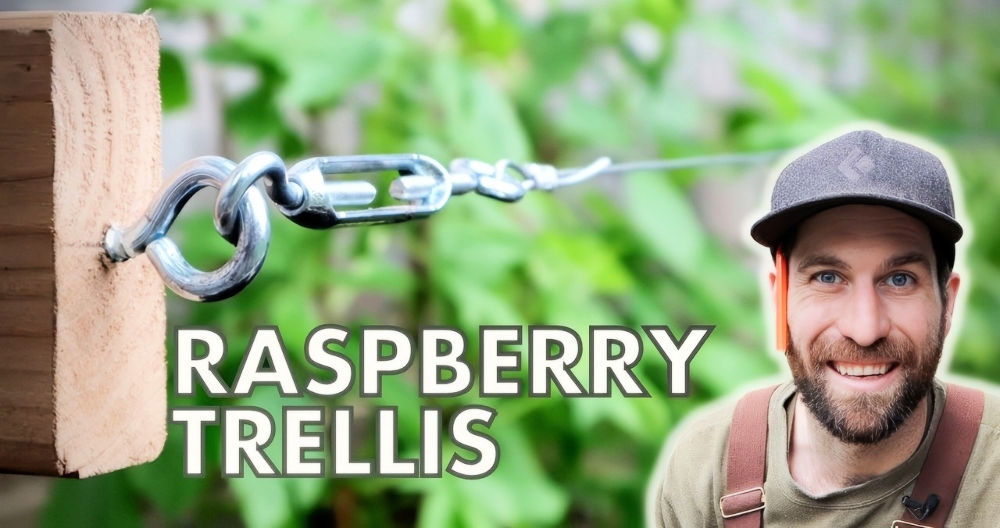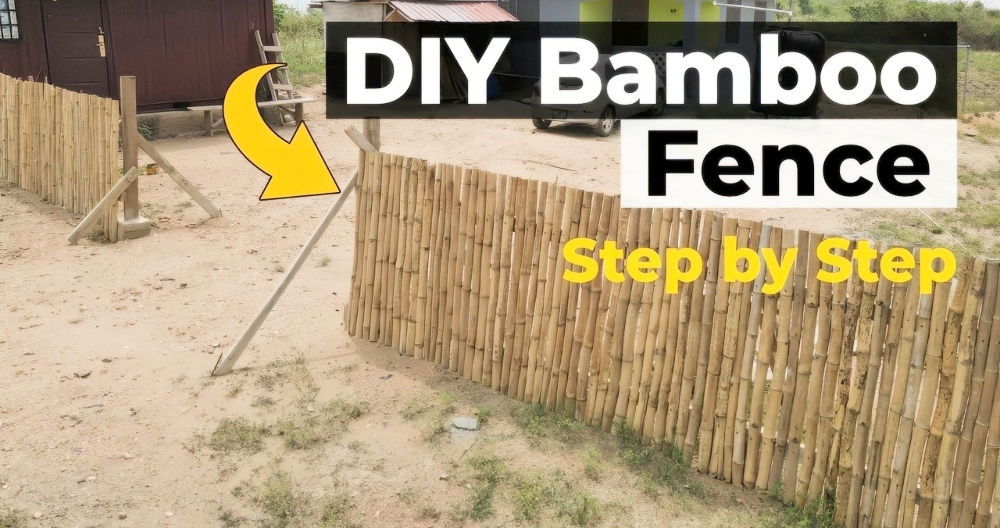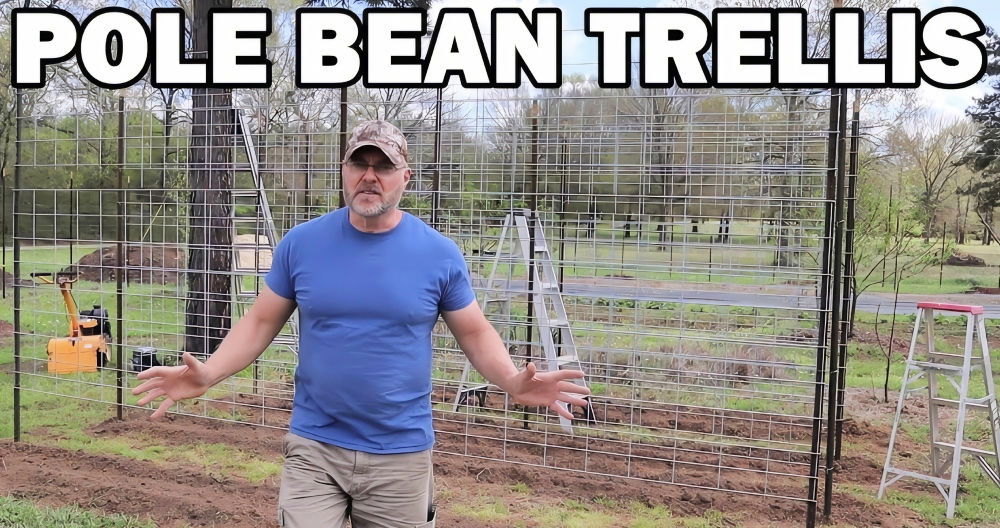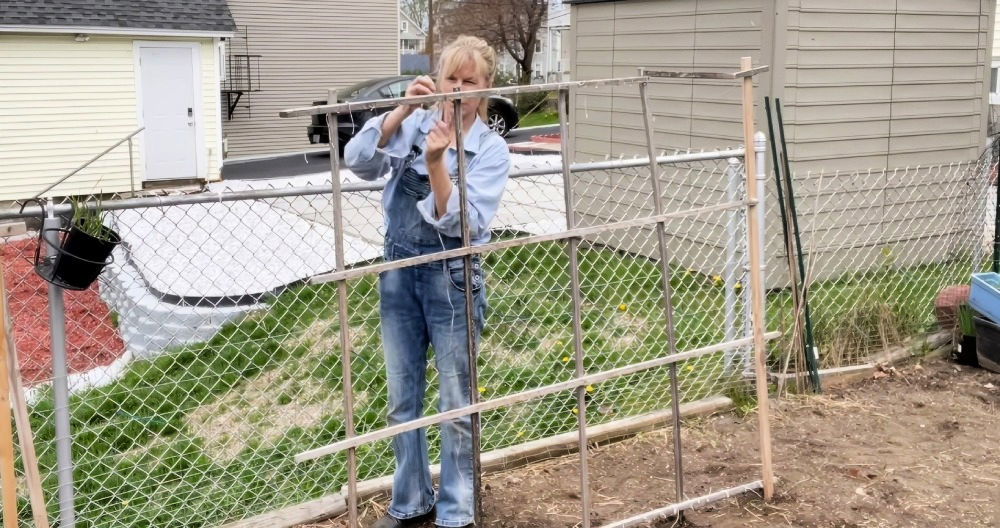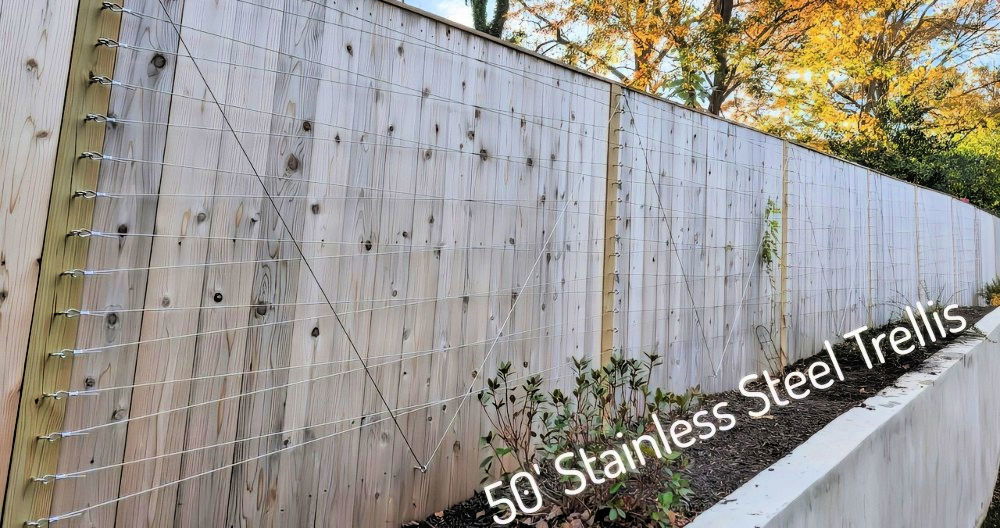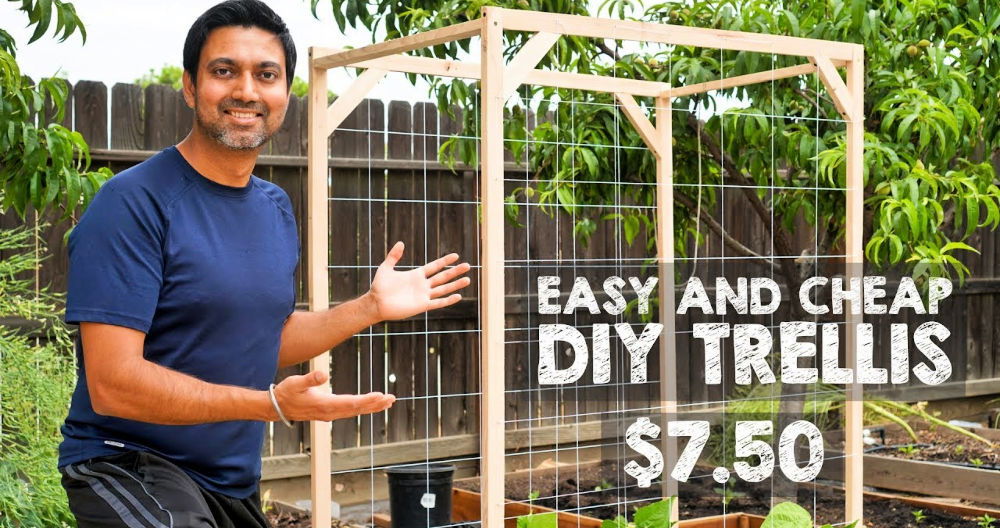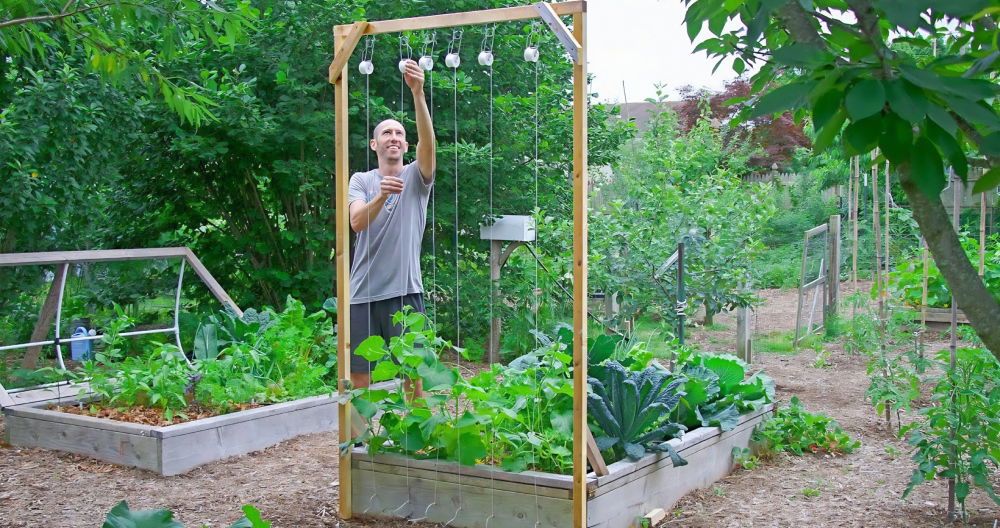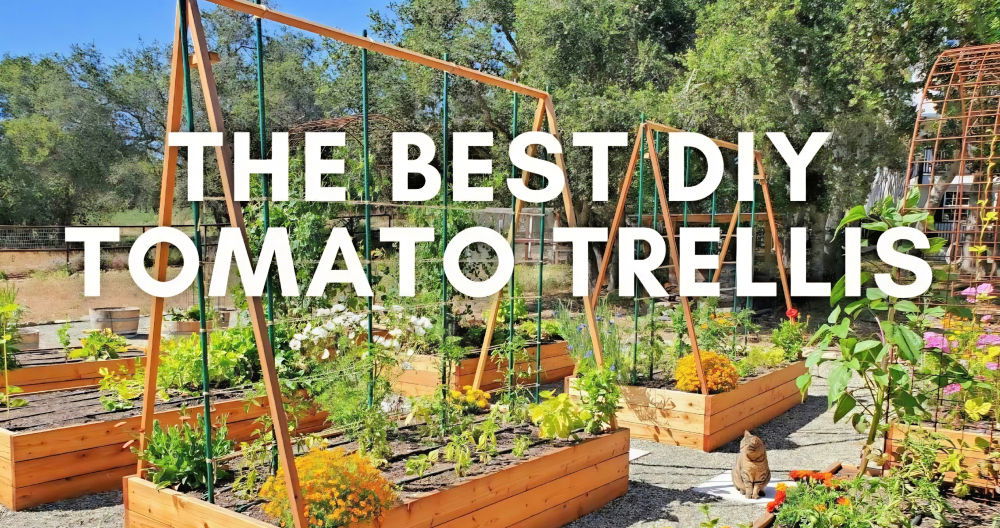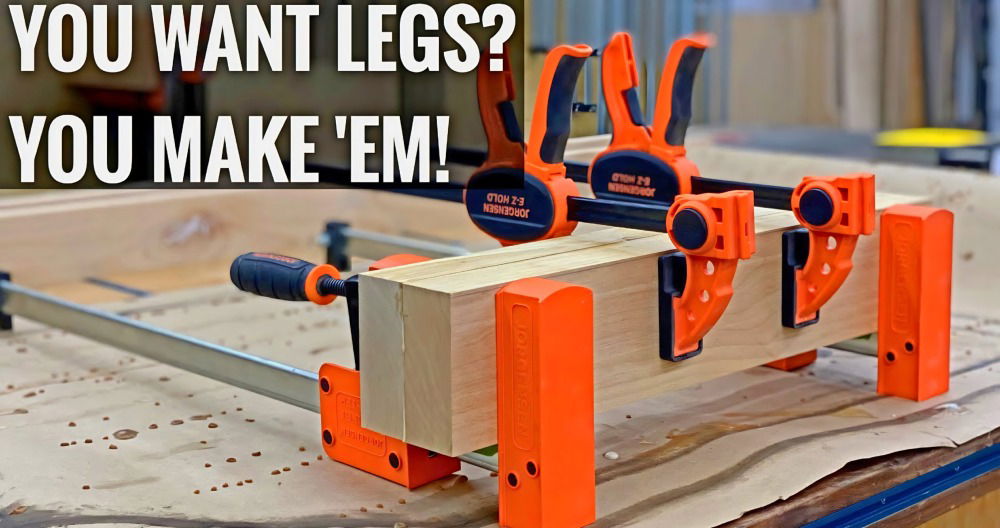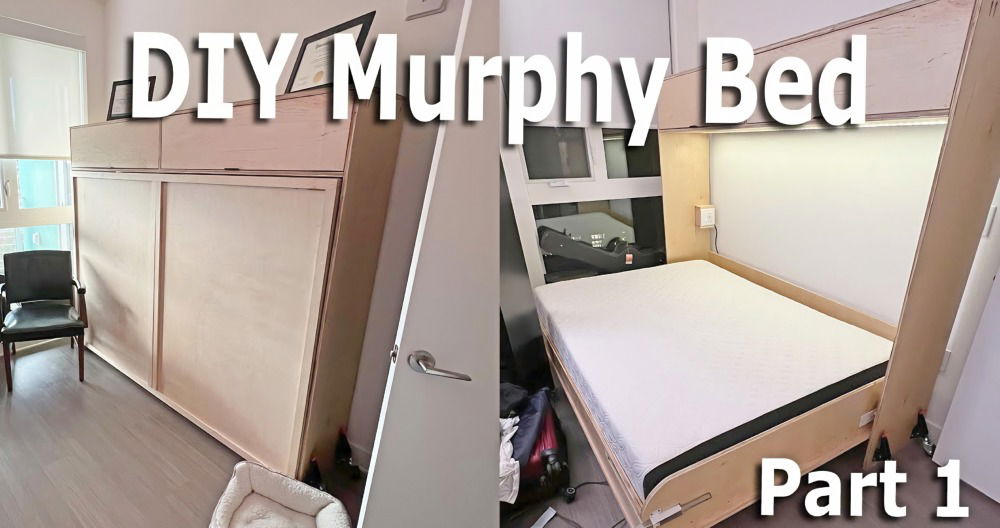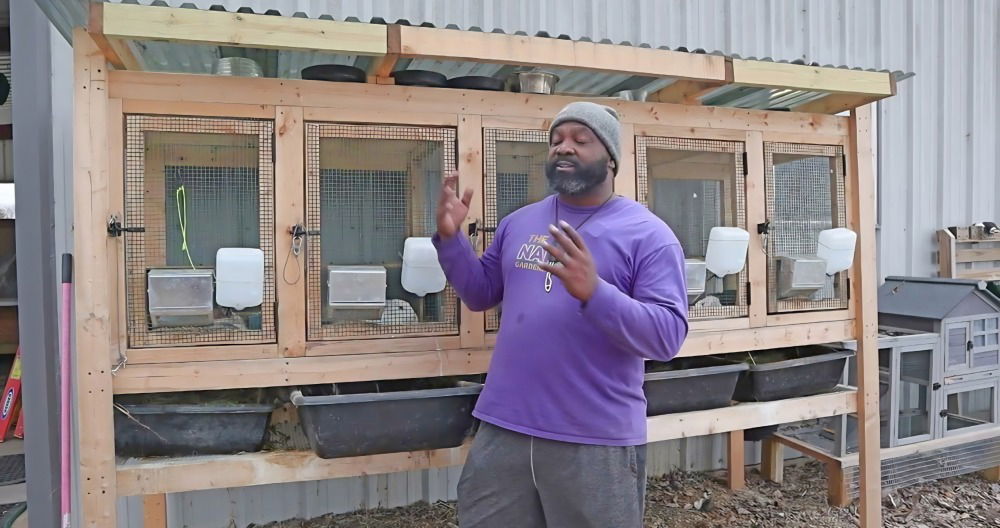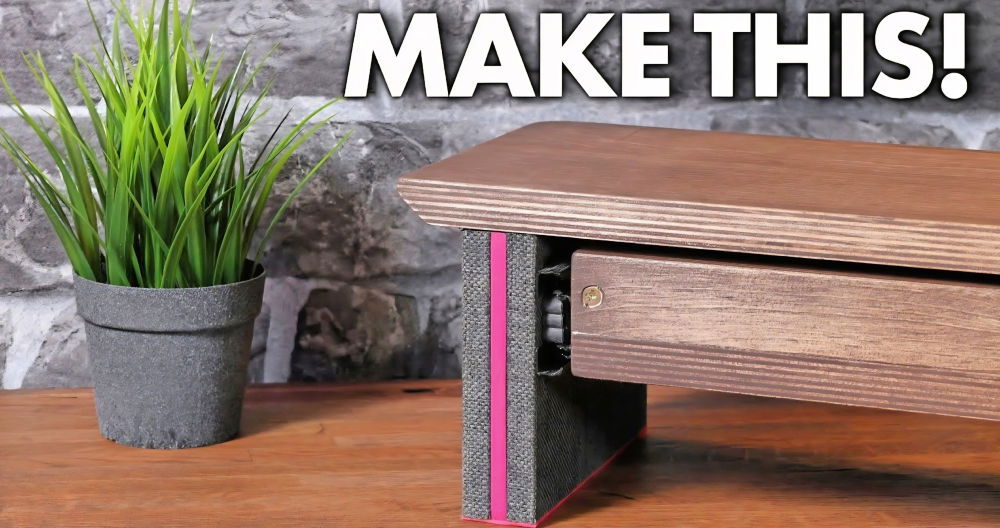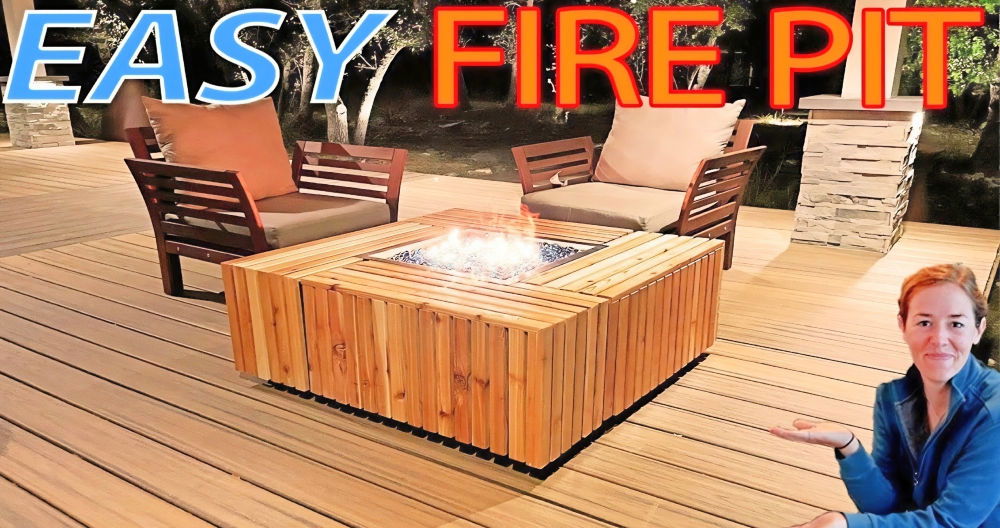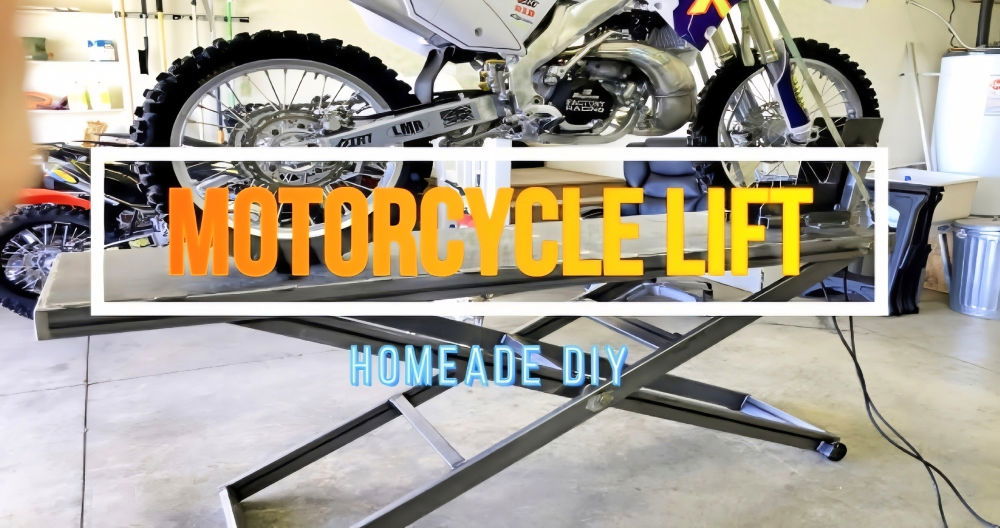Setting up a DIY bamboo trellis was one of the best gardening projects I've ever undertaken. I remember finding some sturdy bamboo sticks in my yard and thinking they'd make perfect supports for my climbing plants. The whole process was straightforward and quite enjoyable.
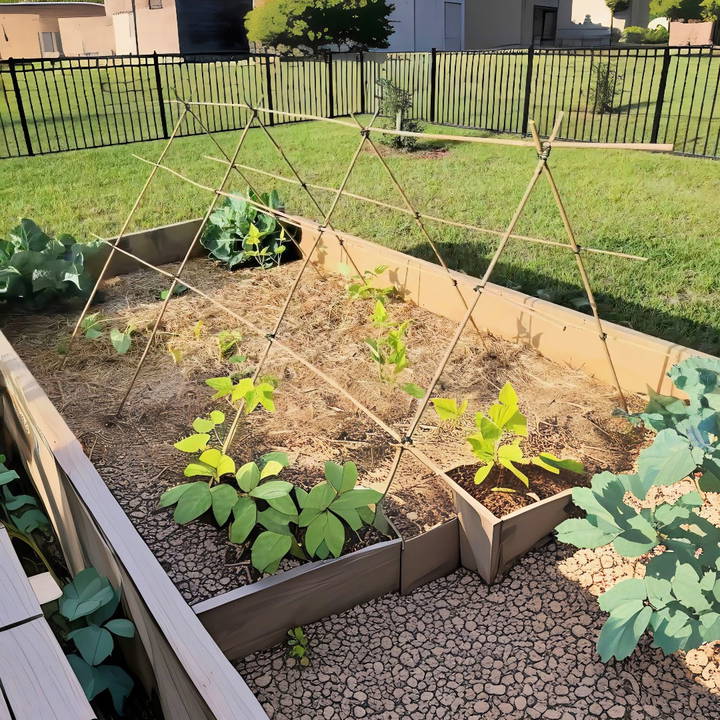
Being able to guide my plants to grow vertically has not only saved space but also added a beautiful, natural element to my garden. I felt a sense of accomplishment every time I saw the plants thriving on the trellis.
I'm helping with this guide on DIY bamboo trellis because it's such a rewarding project.
Materials You Will Need
Here is a list of materials you'll need and why each one is essential:
- Bamboo Poles (available at most home improvement stores like Home Depot or Lowe's): These are the main structure of your trellis. Bamboo is durable, affordable, and easy to work with.
- Garden Ties or Bank Line: These will help you tie the bamboo poles together securely.
- Clamps: These are useful for holding the poles in place as you tie them together.
- Pruning Shears: Useful for cutting the bamboo poles to the desired length.
- Level: To make sure your trellis is straight and sturdy.
- Measuring Tape: Helps to measure and cut the bamboo poles to the right length.
- Black Marker: To mark where you need to cut the poles.
Step by Step Instructions
Learn how to build a sturdy DIY bamboo trellis with our step-by-step instructions for cutting, constructing, and supporting your plants. Perfect for your garden!
Harvesting Your Crops
Before we start with building the trellis, if you have any crops like corn that need harvesting, do that first. I had to harvest my corn to prevent bugs from affecting it further and to make space for my pole beans. Simply cut the corn stalks as low as possible without disturbing the root structure of your other plants.
Cutting the Bamboo
Learn the steps to cutting bamboo, from measuring to precise cuts. Our guide offers essential tips for accurate bamboo cutting.
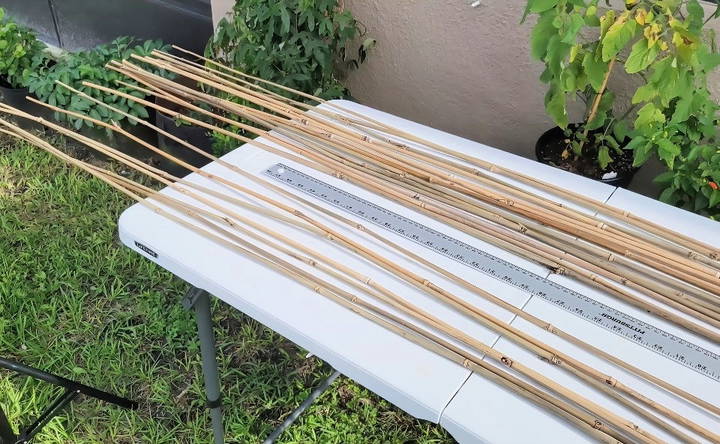
Measure and Cut:
- Use your measuring tape to measure out 4-foot sections on the bamboo poles.
- Use a black marker to mark where you need to cut.
- Cut the bamboo poles using pruning shears or a silky saw. These tools make the cutting process quicker and easier.
Constructing the Trellis
Learn the essential steps for constructing the trellis, including placing the poles in the initial placement phase. Perfect guide for your garden project!
Step 1: Placing the Poles
Discover the best practices for placing the poles. Learn initial placement tips to ensure a solid foundation and optimal alignment.
Initial Placement:
- Identify the spots where your pole beans are planted.
- Place bamboo poles around these spots at an angle, sticking the bottom ends into the ground to form a tent-like structure.
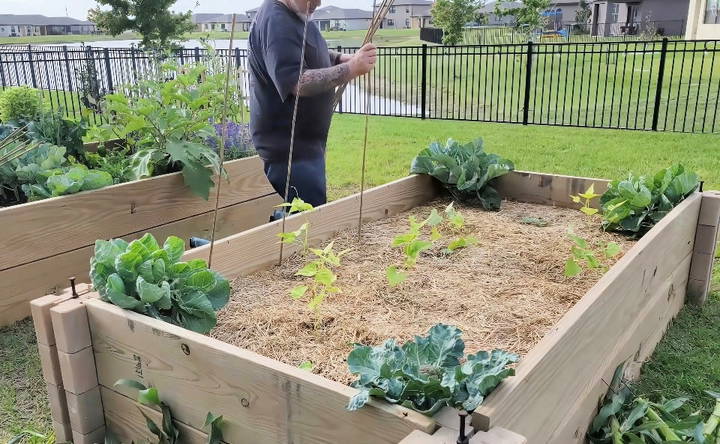
Step 2: Tying the Poles
Learn how to tie the poles and form the structure with our detailed guide. Perfect for beginners in crafting robust frameworks.
Forming the Structure:
- Use garden ties or bank line to tie the top ends of the poles together. This forms the basic structure of your trellis.
- Ensure the poles are evenly spaced for better coverage.
Step 3: Reinforcing the Structure
Enhance your project stability by reinforcing the structure with cross-poles. Learn effective techniques for robust construction support.
Adding Cross-Poles:
- Add horizontal bamboo poles across the vertical poles to build additional support. Use clamps to hold them in place temporarily.
- Adjust with a level to make sure everything is straight.
- Tie these cross-poles securely with your garden ties or bank line.
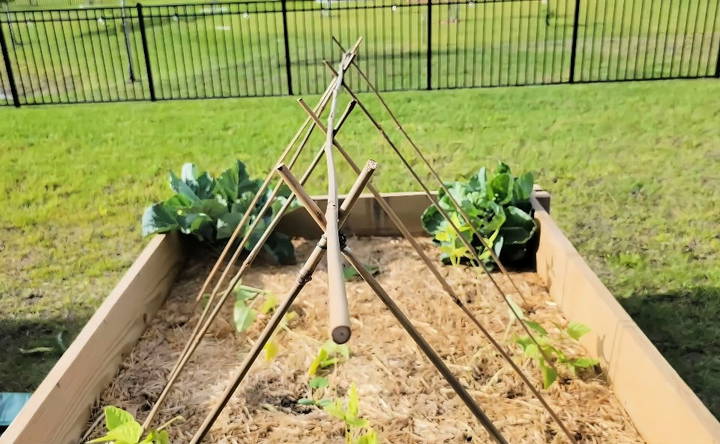
Step 4: Final Adjustments
Perfect your project with final adjustments. Ensure stability and precision in every detail for flawless results.
Ensuring Stability:
- Once everything is in place, give the structure a slight shake to ensure it's sturdy.
- Make any final adjustments as needed.
Supporting Your Plants
Now that your bamboo trellis is in place, it's time to guide your plants:
Tying the Plants:
- Tie your pole beans gently to the bamboo poles to help them start climbing.
- If some plants are near the center, you can add additional poles or run a string down to give them something to climb on.
Checking Progress:
- Regularly check on your plants to ensure they are climbing the trellis and that the structure remains sturdy.
Additional Tips
- Continuous Monitoring: It's crucial to monitor your trellis and plants regularly. Make sure the ties remain secure and the structure hasn't become loose.
- Reuse and Adapt: This bamboo trellis is reusable. Once the growing season is over, you can move it around or adjust it for different plants next season.
- Environment-Friendly Composting: As for any leftover plant material, compost it instead of throwing it away. This gives you rich soil for future planting.
Design Customization
Making a bamboo trellis offers a wonderful opportunity to add a personal touch to your garden. Here's how you can customize the design to make it uniquely yours:
- Choose Your Style: Start by deciding on the shape and size of your trellis. Whether you prefer a traditional vertical ladder, an arch, or a fan-shaped structure, bamboo's flexibility allows for various designs. Consider the space you have and what will look best in your garden.
- Sketch Your Vision: Before you start building, sketch out your design. It doesn't have to be a work of art, just a simple drawing to guide your construction. Think about the height, width, and number of bamboo poles you'll need.
- Select Your Bamboo: Bamboo comes in different thicknesses and lengths. For a sturdy trellis, choose thicker poles for the frame and thinner ones for the lattice. Ensure the bamboo is dry and free from cracks to maintain durability.
- Assemble with Care: When you're ready to build, lay out your bamboo on a flat surface according to your sketch. Use garden twine or wire to tie the joints securely. For a cleaner look, you can drill holes and use dowels to connect the poles.
- Add a Personal Touch: Paint or stain your trellis to match your garden's color scheme. You can also leave it natural for a rustic look. Consider adding decorative elements like string lights or hanging planters to make it stand out.
- Installation: Choose a spot in your garden where your trellis will get enough sunlight and is visible. Dig holes to secure the trellis or use a base to keep it upright. Make sure it's firmly planted to support the weight of climbing plants.
By following these steps, you'll have a bamboo trellis that's not only functional but also a reflection of your personal style. The goal is to make a supportive structure for your plants that also enhances the beauty of your garden.
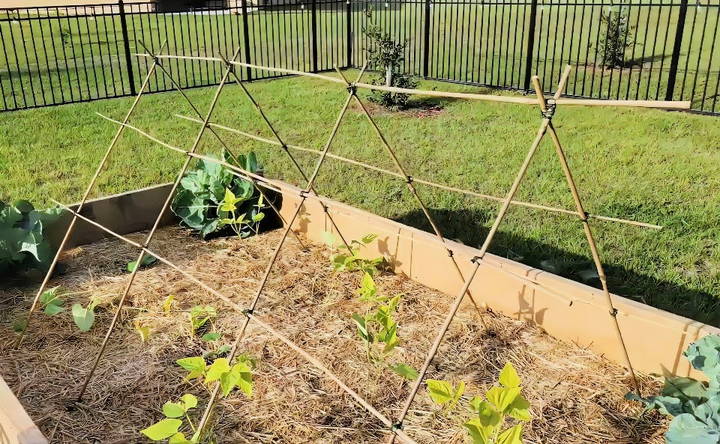
Advanced Techniques
For gardening enthusiasts looking to elevate their bamboo trellis projects, advanced techniques can introduce both functionality and artistic flair. Here's how you can incorporate sophisticated methods into your trellis design:
- Integrate with Irrigation: Consider installing a drip irrigation system within your trellis. This can be done by running irrigation tubing along the bamboo poles and securing it with clips. It ensures your climbing plants receive consistent moisture, which is especially beneficial during the hotter months.
- Build Movable Sections: To adapt your trellis to different plants and seasons, build sections that can be repositioned. Connect the bamboo poles using hinges or removable fasteners, allowing you to expand or contract the trellis as needed.
- Incorporate Lighting: Embed solar-powered LED lights within the trellis to illuminate your garden at night. This will not only highlight your trellis but also provide a beautiful backdrop for evening gatherings.
- Experiment with Shapes: Go beyond traditional designs and experiment with geometric shapes or patterns. Triangles, hexagons, or even circular forms can add a modern touch to your garden space.
- Use Bamboo Joinery: For a more polished look, learn basic bamboo joinery techniques such as the fish mouth joint or the half-lap joint. These methods provide stronger connections and a cleaner finish than simply tying the poles together.
- Add Growth Guides: Attach horizontal or diagonal wires between the bamboo poles to guide the growth of your plants. This can help build a denser, more lush appearance as the plants weave through the trellis.
- Build for Longevity: To protect your bamboo from the elements, treat it with natural oils or a bamboo-specific sealant. This will extend the life of your trellis and maintain its appearance over time.
Use these advanced techniques to build a functional and standout trellis that showcases your craftsmanship, blending practicality and creativity for a beautiful and beneficial addition to your garden.
Troubleshooting Common Issues
When working with bamboo to build trellises, you might encounter a few common issues. Here's how to troubleshoot them effectively:
- Splitting Bamboo: Bamboo can split when it dries out or if it's not handled carefully. To prevent this, soak the bamboo poles in water for several hours before use. If they do split, bind the poles tightly with twine or use non-toxic wood glue to seal the cracks.
- Loose Joints: Over time, the twine or wire holding the bamboo joints together may become loose. Regularly check the joints and tighten them as needed. Alternatively, use hose clamps for a more durable solution.
- Rotting: Bamboo is organic and can rot when exposed to constant moisture. Ensure your trellis is not in direct contact with soil, and treat the bamboo with a natural preservative like linseed oil.
- Leaning or Toppling: If your trellis isn't stable, it may lean or topple over. Make sure the base is secure in the ground. You can also anchor it to a wall or fence for extra support.
- Insect Infestations: Bamboo can attract insects like termites. To deter them, apply a borate-based solution to the bamboo after construction.
- Mold and Mildew: In damp conditions, mold and mildew can form on bamboo. Clean the affected areas with a mixture of vinegar and water, and allow the trellis to dry in the sun.
By addressing these common issues, you'll ensure your bamboo trellis remains strong and beautiful for years to come.
FAQs About DIY Bamboo Trellis
These FAQs contain everything you need to know about DIY bamboo trellis, from building tips to maintenance tricks. Get started on your bamboo project today!
Bamboo is a sustainable and eco-friendly material that’s both lightweight and strong. It’s ideal for supporting climbing plants and can be easily shaped into various designs to suit your garden’s needs.
Choose bamboo poles that are straight and free of cracks. The diameter should be suitable for the weight of the plants you intend to support. For most garden plants, poles with a diameter of 1-2 inches are sufficient.
Absolutely! Bamboo is versatile, allowing you to build flat, A-frame, tipi, or even V-shaped trellises depending on your garden layout and the types of plants you're growing.
To prolong the life of your bamboo trellis, consider treating the bamboo with a wood preservative to protect against rot. Regularly check the trellis for any loose joints or damage and repair as necessary to ensure it remains sturdy and safe for your plants.
To make your bamboo trellis eco-friendly, source bamboo from a responsible supplier that ensures sustainable harvesting practices. Also, avoid using chemically treated bamboo; instead, opt for natural treatments like drying in the sun or using natural oils to preserve the bamboo. This way, you're not only making a functional garden piece but also contributing positively to the environment.
Enjoy the Results
Building a DIY bamboo trellis enriches your gardening experience. It's cost-effective, easy to build, and highly functional. By following these steps, you've built a structure that not only supports your current plants but can be reused and adapted for many gardening seasons to come.
Remember, gardening is all about experimenting, learning, and adapting. Whether it's dealing with pests or ensuring your plants have the right support, having backup plans always helps. Take pride in what you've buildd, enjoy the process, and savor the fruits (or vegetables) of your labor.


